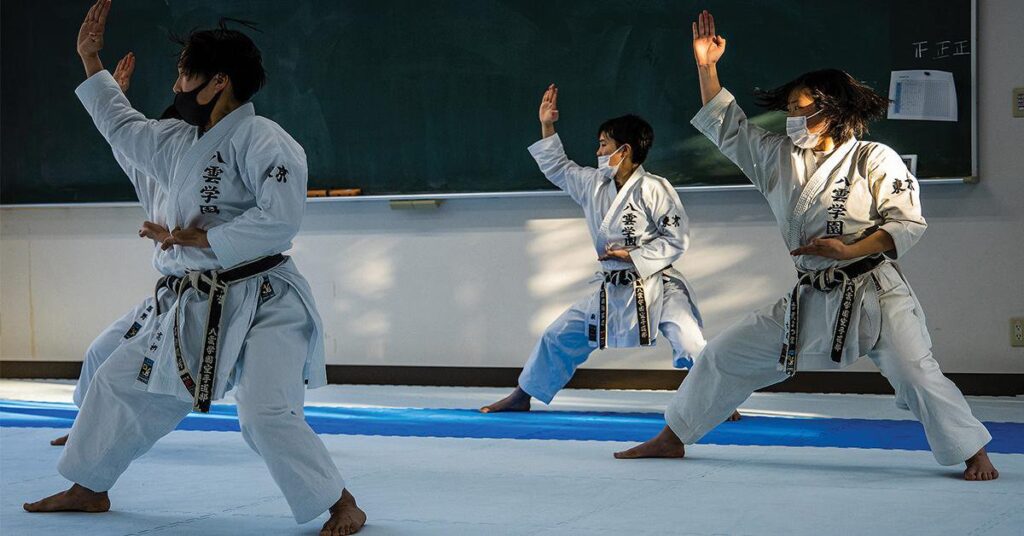Martial arts action games have evolved significantly since the release of the first game in 1984. Technological advancements and the growing demand for immersive experiences have driven the constant innovation in gaming. From basic side-scrolling beat ’em ups to complex open-world games, the martial arts action game genre has come a long way. The rise of 3D graphics in video games in the 1990s led to the development of more intricate fighting systems and depth of storytelling. The current trend is towards open-world gameplay, intricate combat mechanics, and deeper character customization, with the potential for more immersive experiences in the future.
Making the Move: The Evolution of Martial Arts Action Games
Introduction
Martial arts action games have been a staple in the video game industry since its inception. These games have undergone a significant transformation over the years, both in terms of graphics and gameplay. The constant evolution can be attributed to technological advancements and the growing demand for immersive experiences. In this article, we will take a look at the evolution of martial arts action games and the impact of these changes on the gaming industry.
The Early Days
The first martial arts action game was released in 1984, titled “Karateka”. Developed by Jordan Mechner, this game was a side-scrolling beat ’em up that featured a lone fighter taking on multiple enemies. The game had basic graphics and limited fighting moves, but it set the foundation for future martial arts action games.
The next significant release in this genre was “Double Dragon” in 1987. This game took the basic concept of “Karateka” and expanded on it by adding co-op play and a wider range of moves. The game also introduced grappling moves and weapon-based combat. “Double Dragon” was a massive success and spawned numerous sequels and imitators.
Rise of the 3D Era
The 1990s saw a shift towards 3D graphics in video games. Martial arts action games also made the transition, and “Virtua Fighter” was one of the first 3D fighting games released in 1993. This game introduced a new level of depth and strategy to martial arts games by featuring multiple fighters with unique fighting styles and move sets.
“Tekken” was another influential 3D fighting game released in 1994. It focused on story-driven gameplay, featuring a diverse cast of fighters with intricate backstories that the player could experience. The game was famous for its depth and complexity, and it became a critical and commercial success.
The Modern Era
The 2000s saw the rise of the modern era of martial arts action games characterized by more robust and varied gameplay, improved graphics, and increasingly immersive experiences. The “Dead or Alive” series released in 1996 was one of the pioneers of this era. It featured high-quality graphics, a complex fighting system, and fully realized female characters. The game was a critical and commercial success and led to numerous sequels and spin-offs.
The “Ninja Gaiden” series, which began in 1988, came back in 2004 with a full reboot, and it was another influential release. It had a compelling storyline, intricate combat mechanics, a wide range of weapon types, and graphics that showcased the capabilities of consoles at the time. The game was praised for making fights feel visceral and satisfying.
Current Trends
The current trend in martial arts action games is towards open-world gameplay, more intricate combat mechanics, and deeper character customization. The “Yakuza” series, which began in 2005, demonstrated the potential of open-world martial arts games. It featured an immersive game world set in Tokyo, a cast of characters with unique fighting styles and a deep storyline that spanned multiple games.
“Sekiro: Shadows Die Twice” released in 2019, showcased the potential for intricate combat mechanics. It had a combat system that focused on parries and timing, which rewarded skilled players, immersive graphics, and storytelling that blurred the line between the East and the West.
Conclusion
Martial arts action games have undergone a significant transformation over the years, from basic side-scrolling beat ’em ups to complex open-world games with immersive graphics and intricate combat mechanics. The evolution of these games can be attributed to technological advancements and the growing demand for immersive experiences. With the constant innovation in gaming, the future of martial arts action games looks bright, and we can expect more exciting and immersive experiences in the future.
